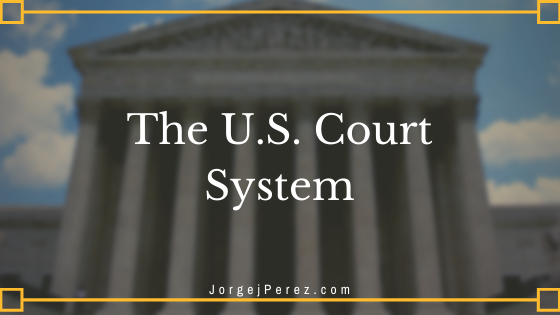The U.S. Court system has two main branches. Federal courts decide cases brought against the United States, and cases that involve federal laws. States also have their own court systems authorized to hear cases involving citizens and laws of a particular state or local community.
Federal cases begin in federal district courts, trial courts that hear cases involving alleged violations of the Constitution, cases that involve people from different states or countries, disputes concerning laws and treaties.
Parties to cases heard in the district courts can appeal decisions to the Federal courts of appeals, or the circuit courts, which review the cases and either affirm or reverse the decisions of the district court. The decisions of the appellate courts can also be appealed to the U.S Supreme Court, the highest court in the country, and the last chance to overturn a decision of district courts. The Federal Bar Association provides plenty of information for lawyers and the public on the federal court system including the types of cases heard in federal court, the appeals process, and the policies and rules of federal courts.
Most legal disputes are heard by state courts, which, typically have courts dedicated to specific areas such as the family court, juvenile court, probate courts which handle cases involving wills and estates. According to the Center for American Progress, 90 percent of cases, both civil and criminal, are heard by state courts. The center examines the differences between federal and state courts. Like the federal court system, state courts also have an appellate level that reviews cases and decisions. And again, like federal courts, decisions made by appeals courts can be appealed to a state’s Supreme Court where a panel of seven to nine justices review the case and decisions of the lower courts.
While both federal and state courts have well-established avenues to appeal decisions made in trial courts, the number of trials has been steadily declining for generations. According to an article published by the Bolch Judicial Institute of Duke University, authors, Jeffrey Q. Smith and Grant R. MacQueen look at the numbers and the causes of the decline. Smith and MacQueen argue that updated procedural rules have become so expansive that they render trials unnecessary since most cases can be resolved during the pretrial process through settlements or pretrial adjudication. While time, costs, summary judgments, potentially punitive damages, and options for alternative dispute resolution have also played a part in diminishing the number of trials, Smith and Macqueen stress that while trials are declining, the right to a trial is still central to the U.S. judicial system
The U.S. Court System is one of Federalism. This concept splits the courts into different levels which creates a hierarchy in court decisions. The federal court system has a very specific jurisdiction, based on the constitution, which dictates what types of cases the courts within the federal court system can hear. The jurisdiction of a certain case is based on the location of the issue, as well as the facts of the issue (i.e. how much money is at issue who the parties are within the case). Cases that fall under the federal jurisdiction are heard in the federal system at the beginning of the case. All other cases fall under state court jurisdiction and follow the various state court systems. Each state within the U.S. has its own court system, but most states follow the general structure of the federal courts.
The federal court system is broken up into three levels: the district level, the appellate court, and the Supreme Court. The district courts are the trial courts. These are the initial courts that a case will start in and look the most like our popular culture understanding of courts – a plaintiff, a defendant, a judge, and a jury. Once jurisdiction is determined, a case will be filed within the district court, the initial trial will take place and a verdict issued.
The federal appellate courts are the next level up and only hear cases that are being appealed from the federal district courts. This means if either side believes the verdict of the district court is incorrect, they will typically file an appeal to the verdict. The appellate courts are made up of a panel of judges and do not have a jury. The panel of judges hears the arguments as to why the district court’s verdict was incorrect on appeal and release an opinion that either upholds or overturns the district court decision.
Finally, the Supreme Court of the United States hears cases from the appellate courts. Either party can typically appeal an appellate court decision to the Supreme Court, but the Supreme Court is only obligated to take the cases they choose. The Supreme Court’s decision is final and creates a precedent for all future similar cases.

